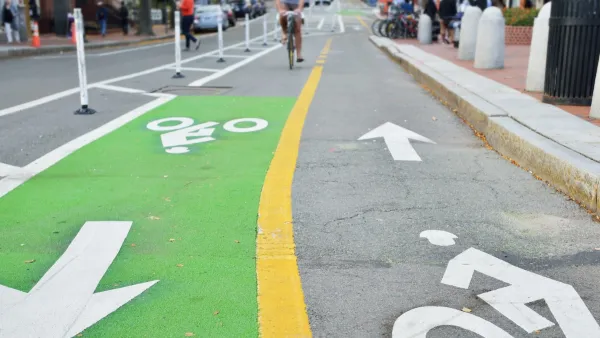As managing editor of Planetizen, I'd like to make a quick note on today's op-ed, Resisting Dickensian Gloom by Tony Recsei. Mr Recsei asked for a chance to respond to a recent criticism of his work by Planetizen regular Michael Dudley. It is our policy at Planetizen to allow points of view that are critical of the status quo in urban planning, so I agreed to run the piece. I did ask Mr. Recsei to tone down some of the more personal attacks on smart growthers so that his points could be presented more clearly to our audience, and I believe he has done that.
As managing editor of Planetizen, I'd like to make a quick note on today's op-ed, Resisting Dickensian Gloom by Tony Recsei. Mr Recsei asked for a chance to respond to a recent criticism of his work by Planetizen regular Michael Dudley. It is our policy at Planetizen to allow points of view that are critical of the status quo in urban planning, so I agreed to run the piece. I did ask Mr. Recsei to tone down some of the more personal attacks on smart growthers so that his points could be presented more clearly to our audience, and I believe he has done that.
I did do one bit of fact-checking, because I was interested in the work of the Australian Conservation Foundation, which Mr. Recsei cites. His interpretation is that inner-city residents of Australian cities create more greenhouse gas emissions than those who live in suburban areas. I asked Charles Berger, Director of Strategic Ideas at the ACF, if that was the case. Here is his response:
The findings are quite challenging for some environmentalists. In particular, they suggest that merely increasing urban densities and using public transport will not necessarily reduce total or per-capita ecological footprints. In Australia, wealthy inner city residents are driving less than others, but have increased consumption in nearly every other category of goods and services. Whatever savings are being achieved by bicycling and walking are being more than counterbalanced by increased airplane flights, food, clothing, and much else besides.
We are aware that some commentators have used these findings to encourage unsustainable peri-urban developments, and we categorically reject their conclusions. Eco-footprints in suburban areas in Australia are lower than in the urban core in spite of, not because of, lower residential densities. What the pro-urban sprawl groups also miss is that fact that Australian ecological footprints are across the board far higher than any reasonably sustainable level. Neither inner urban nor outer suburban development patterns are currently anything like sustainable.
Neither consumption-intensive inner city lifestyles, nor vehicle-dependent suburban lifestyles, are compatible with ecological imperatives. The main finding of our Consumption Atlas is that both need to change, and change dramatically.
Regards
Chuck Berger

Analysis: Cybertruck Fatality Rate Far Exceeds That of Ford Pinto
The Tesla Cybertruck was recalled seven times last year.

National Parks Layoffs Will Cause Communities to Lose Billions
Thousands of essential park workers were laid off this week, just before the busy spring break season.

Retro-silient?: America’s First “Eco-burb,” The Woodlands Turns 50
A master-planned community north of Houston offers lessons on green infrastructure and resilient design, but falls short of its founder’s lofty affordability and walkability goals.

Test News Post 1
This is a summary

Analysis: Cybertruck Fatality Rate Far Exceeds That of Ford Pinto
The Tesla Cybertruck was recalled seven times last year.

Test News Headline 46
Test for the image on the front page.
Urban Design for Planners 1: Software Tools
This six-course series explores essential urban design concepts using open source software and equips planners with the tools they need to participate fully in the urban design process.
Planning for Universal Design
Learn the tools for implementing Universal Design in planning regulations.
EMC Planning Group, Inc.
Planetizen
Planetizen
Mpact (formerly Rail~Volution)
Great Falls Development Authority, Inc.
HUDs Office of Policy Development and Research
NYU Wagner Graduate School of Public Service





























